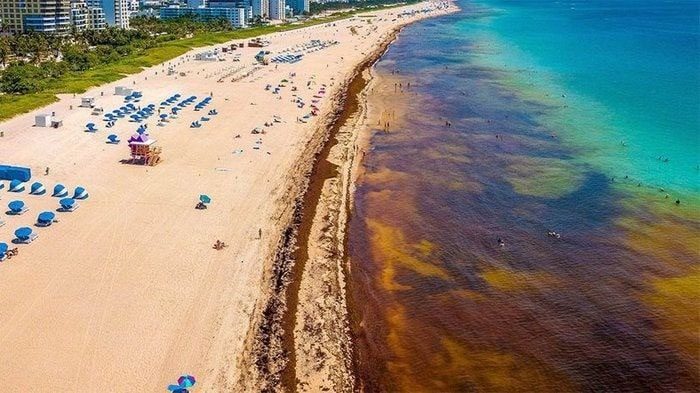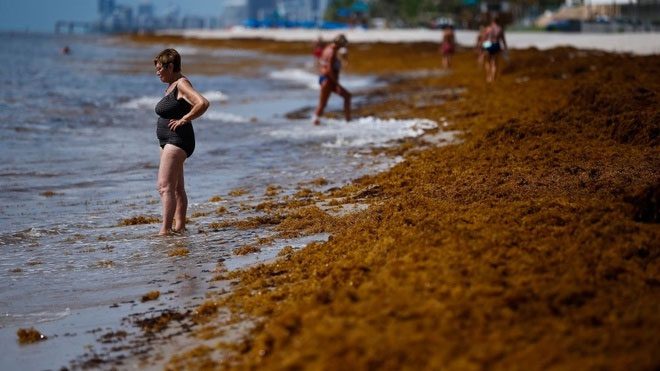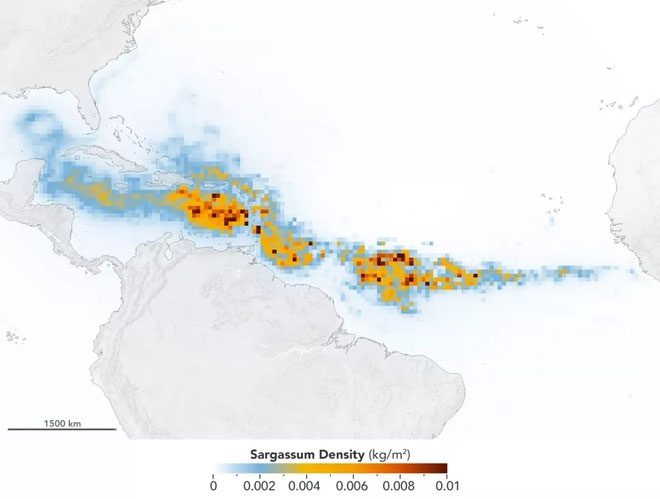The massive bloom of seaweed washing ashore on the beaches of the United States and Mexico has raised concerns among scientists about numerous consequences for coastal ecosystems and human health.
Researchers report that the large seaweed mats are visible from satellites and are drifting toward the beaches of the Gulf of Mexico.

Large amounts of seaweed bloom washing ashore on Florida beaches. (Photo: University of South Florida/Florida Standard).
The phenomenon of sargassum blooms is not new, but this is believed to be the largest bloom ever recorded, stretching from the Gulf of Mexico to the coasts of West Africa, according to NBC on March 12.
In offshore waters, this type of seaweed is relatively harmless and even has some benefits, such as absorbing CO2 and providing habitat for fish and crustaceans.
However, ocean currents are pushing hundreds of tons of seaweed close to the shores of the Gulf of Mexico and the Caribbean. The seaweed that washes ashore can kill coral, devastate coastal ecosystems, and degrade water and air quality as it decomposes.
Scientists are concerned that the invasion of seaweed may continue in the coming months, threatening the environment.

Seaweed blooms washing ashore on U.S. beaches are impacting landscapes, human health, and coastal ecosystems. (Photo: AP).
Brian LaPointe, a scientist at the Harbor Branch Oceanographic Institute, noted that the vast amounts of seaweed on the beaches not only disrupt the scenery but can also clog intakes at power plants or desalination facilities, inundate docks, and hinder maritime movement. The disposal of hundreds of tons of seaweed will be very costly.
Moreover, decomposing seaweed releases hydrogen sulfide gas, which affects local residents and tourists, LaPointe said. He mentioned that thousands of people have visited hospitals due to respiratory issues related to decomposing seaweed after a significant bloom in 2018.
Scientists indicate that climate change is causing ocean temperatures to rise, creating an ideal environment for algae to thrive.
Meanwhile, nutrients and agricultural fertilizers flowing into the ocean have made it easier for the algae to bloom.

Sargassum seaweed density recorded in 2019, stretching from the Gulf of Mexico to the coast of West Africa. (Photo: NASA/Space).




















































